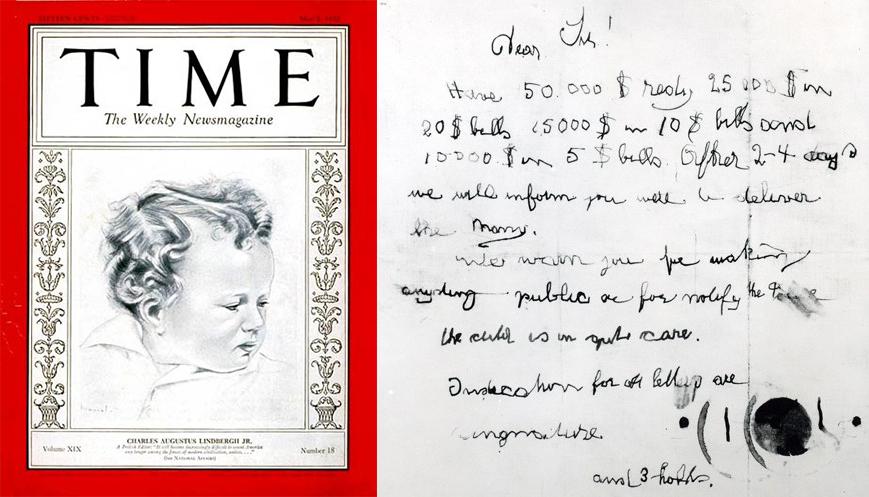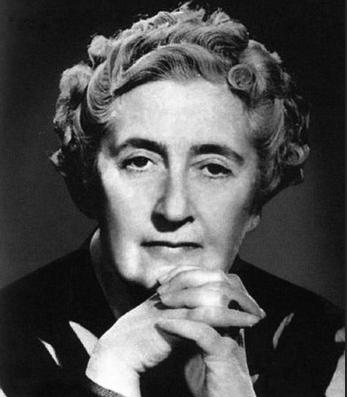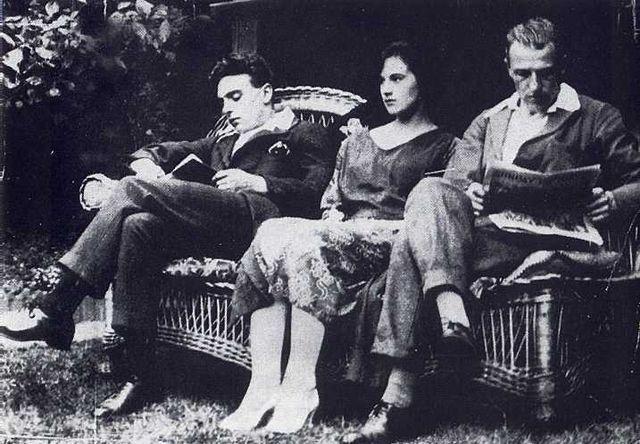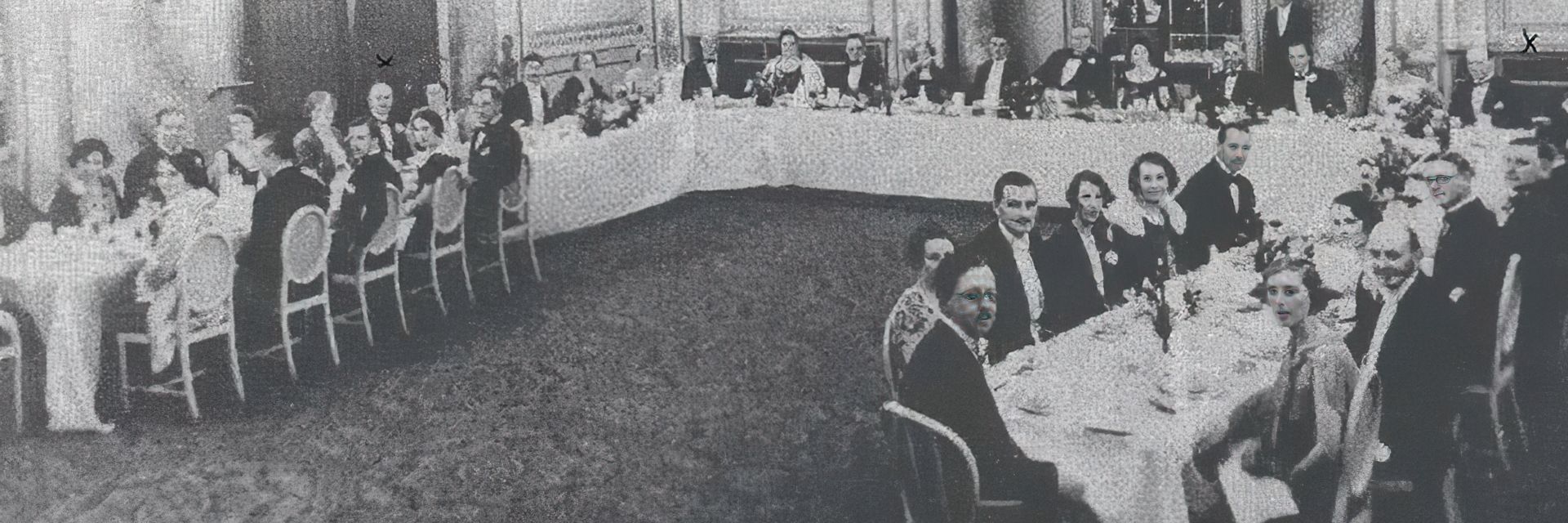Renowned crime fiction author Agatha Christie was a lifelong follower of true crime, and her writing often reflected actual cases drawn from the day’s headlines. With her like-minded Detection Club, she set about incorporating true crime into her “whodunits.”
◊
Agatha Christie is among the best-known, and best-selling, authors of all time. It’s been estimated that more than two billion of her books have been sold worldwide, in English and in translated editions in 100 different languages. Many of her fans refer to her as the “Queen of Crime” for her mastery of crime fiction. The publication of her first novel, The Mysterious Affair at Styles, in 1920, is often credited as being the debut of a new literary genre, the “whodunit” mystery.
It was in this work that she introduced a character, the Belgian detective Hercule Poirot, whose storied life and career have long outlasted those of his creator. Even today, with the 2022 film version of Christie’s Death on the Nile, British actor Kenneth Branagh has breathed life into the now-over-100-year-old character of M. Poirot. With Poirot’s distinctive mustache and reliance on the “little grey cells” – referring to his brain’s remarkable powers of logic and deduction – the dapper detective could be relied on to wrap up all the loose ends of any mystery he confronted.
Christie is known above all as a spinner of suspenseful yarns. But her interests ranged beyond merely coming up with new variations on the standard whodunit themes: a confounding murder, a pool of potential murderers, a rich assortment of clues (and red herrings), and, finally, the logical explication of how it was the character you’d least expect who committed the foul act.
Throughout her life, Christie the fiction writer was fascinated with true crime stories. Not only did she weave into her fiction barely disguised tales ripped from the current news of high-profile crimes, she also belonged to a “secret society” – the Detection Club, composed of London’s most eminent mystery writers – whose topic of discussion in their monthly meeting was often the crime of the day.
A review of two notorious true crime stories of the era will reveal how these cases influenced Christie’s fiction.
For more on Agatha Christie, check out The Agatha Christie Code on MagellanTV.
True Crime Case No. 1: The Lindbergh Baby Kidnapping
On the night of March 1, 1932, in the quiet hamlet of East Amwell, New Jersey, the crime of the young century took place, and the world took notice. Famed aviator Charles Lindbergh and his wife, Anne Morrow Lindbergh, had given birth in 1930 to their firstborn child, namesake Charles Lindbergh, Jr. That fateful night, the infant’s disappearance was discovered by the Lindberghs’ maid, who alerted the parents and, in turn, set off a frantic search for the whereabouts of the 20-month-old child.
The kidnapping was so shocking to the nation that the president of the United States, Herbert Hoover, in a highly unusual move, allowed the FBI, a federal agency, to assist New Jersey state police in investigating the crime. But the clues were scarce and led to few leads. A ransom note had been left on the windowsill of Charles Jr.’s bedroom, and fragments of a handmade ladder were found outdoors, underneath the window. But no fingerprints or other identifying clues were detected.
The investigation continued, and, with assistance from the U.S. Treasury Department, a ransom was paid, in cash. Though the bills were unmarked, their serial numbers were recorded, and finally, in New York City, the trail led to the identification of the chief – and only – named suspect, a German immigrant named Richard Hauptmann.

At left, Time Magazine covers the Lindbergh baby’s disappearance; at right, the ransom note.
(Credits: Time Magazine, l., via Wikimedia; FBI, r., via Wikimedia)
It was left to a local truck driver to make the grisly discovery of the child’s lifeless body, discarded by the side of a road not far from the Lindberghs’ estate, more than two months after the abduction. It appeared that Charles Jr. had been murdered soon after the kidnapping, by a blow to the head.
Hauptmann fiercely protested his innocence, blaming a since-deceased fellow immigrant for the bills being in his possession. But the heat of the investigation and the celebrity of the victims made his conviction a certainty. Claiming his innocence to the end, he was executed in 1936.
Christie Co-Founds the Detection Club, Where Crime Stories Are Shared Along with Dinner
By the early 1930s, Christie was a well-established murder mystery writer. Inspired by the Lindbergh case, she set about working the whole ghastly story into her fiction. In Murder on the Orient Express (1934), the absconded baby is a girl, and her father, an American colonel, is a well-known aviator. After the ransom is paid, the child’s body is discovered.
Christie was at the time a founding member of a pseudo-secret, London-based society called the Detection Club. Begun in 1930 by mystery writers, including such luminaries as G.K. Chesterton and Dorothy L. Sayers, the society-cum-social club fostered fellowship among its peers, and its monthly meetings provided an opportunity for convivial chatter among its members concerning both its writers’ work and the notorious crimes of the day.

Agatha Christie (Credit: Violetriga, via Wikimedia)
Christie was an active member, participating in the mock-serious initiation rites for new members, where each was compelled to affirm an oath banning bad fiction writing: “Do you promise that your detectives shall well and truly detect the crimes presented to them, using those wits which it may please you to bestow upon them, and not placing reliance on, nor making use of, Divine Revelation, Feminine Intuition, Mumbo Jumbo, Jiggery-Pokery, Coincidence, or Act of God?”
One notable feature of many of Christie’s novels is their attention to the specific details of poisons and their often fatal effects. The novelist happened to be an expert in this field, serving as a volunteer pharmacy assistant during each of the world wars.
Christie eventually ascended to the group’s presidency, a post she maintained until her death. Though it was not a group with a high-minded social purpose – its dinners were reputed to be decadent, alcohol-soaked affairs – members of the group were well-versed in notable crimes. On at least one occasion, that of the conviction of Edith Thompson, members used their positions as successful mystery writers to speak out about what they saw as a miscarriage of justice.
True Crime Case No. 2: The Murder of Percy Thompson
A well-to-do couple in London, Percy Thompson and his wife, Edith, lived a conventional life typical of British marriages in the 1920s. Though both were employed and contributed to the family’s wealth, Percy was a domineering, controlling – and sometimes violent – husband, known to leave bruises. Edith, vivacious and intelligent, had become engaged to him when she was just 15. Knowing nothing else in life, she accepted her fate with grace and resignation.
Everything changed for her when she was re-introduced to an acquaintance from her youth, a boy who had grown up to be a virile, intensely attractive, well-traveled seaman, Frederick Bywaters. Eight years her junior, she found his company irresistible. He represented everything Edith lacked in her marital union. She was slowly but inexorably drawn to him, and he to her, and they commenced an illicit affair under the nose of her oblivious husband.
Bywaters had ingratiated himself so well into the couple’s company that he was invited to vacation with them and, later, even take up residence at their fashionable Kensington Gardens address. All that changed, however, when, during a violent fight between husband and wife, Bywaters intervened and was hastily ordered to leave the premises.

From left, Frederick Bywaters, Edith Thompson, Percy Thompson.
(Credit: Associated Newspapers Press, via Wikimedia)
The forced end to their physical intimacy only fueled Edith’s ardor, and she began writing Frederick passionate letters, more than 60 in all, in which she fantasized about their future together, and the departure – by any means necessary – of her emotionally estranged husband. Nonetheless, she persevered in her marriage until one fateful evening in October 1922. As Percy and Edith walked home from an evening at the theater, Frederick, who had been lying in wait, jumped from the bushes and stabbed the husband repeatedly with a five-inch, double-edged dagger. With a shocked Edith wailing at the scene, her husband expired in front of her.
The subsequent trial exposed not only the affair but her love letters as well, a factor in Edith being charged with murder along with her paramour. In one letter, Edith openly wished Percy dead. The ensuing coverage of the trial in the British tabloid press painted her as a knowing accomplice, despite no evidence of collusion. Tragically, both were convicted and executed by hanging.
The Detection Club Takes Up a ‘Miscarriage of Justice’
Members of the Detection Club, all avid followers of true crime, were shocked at the outcome of the legal proceedings. It was unthinkable to them that Edith should be held accountable for the headstrong actions of her young, impetuous lover. And so they discussed the matter at length over many long evenings at club dinners.
Several of the crime writers in the group took it upon themselves to use their creative skills to speak out against what they viewed as an unfair verdict against a woman whose only crimes, as they saw it, were to be unlucky in love and to express her desire for a more fulfilling romantic connection.
Even before the club’s inception, some who would become members began to publish fiction featuring heroines who had been wronged by the justice system and unfairly executed. First to print was E.M. Delafield, whose Messalina of the Suburbs was issued in 1924. This was followed by a novel, The Documents in the Case (1930), jointly written by club co-founder Dorothy L. Sayers and Robert Eustace.
Detection Club instigator Anthony Berkeley, first president of the club, was particularly incensed, publishing several works that valorized female protagonists; his novel As for the Woman, which came out in 1939, was most specifically inspired by the Edith Thompson case.
Several years later, it was Agatha Christie’s turn to take up the cause. In 1949, she released Crooked House, a tale in which the younger wife of a family patriarch is accused of his murder, in part because of suspicions she is having an affair with the family’s live-in tutor. Of course, this being an Agatha Christie story, neither the wife nor any of the prime suspects turns out to be the actual killer.
A Lover of True Crime Who Turned Her Passion into Fiction
Over the course of her 80-some published books, Agatha Christie perfected her formula for crime fiction. The prime suspect is never the guilty party, and it takes the dedicated application of logic, reasoning, and the proper interpretation of clues to find the true culprit. Today, the vitality of her work remains a pleasure to readers. And it continues to inspire films, stage productions, and even video games, because her writing offers compelling, believable storylines and plot twists. Her attention to the many real-life crimes that caught her fancy often paid off in the feel of “ripped-from-the-headlines” realism, along with plot details, such as types and effects of various poisons, that grew directly from her own education and life experiences.
Fans of true crime might be surprised by how true to life these fictional occurrences are. In fact, in the 2020 book True Crime Parallels to the Mysteries of Agatha Christie, author Anne Powers manages to excavate a total of 70 true-crime cases that inspired plots and subplots in Christie works. There are many reasons to want to curl up with a good murder yarn, and Christie’s long career serves as a reminder that fiction, indeed, can be as satisfying as truth.
Ω
Kevin Martin is Senior Writer for MagellanTV. He writes on a wide variety of topics, including outer space, the fine arts, and history. He has had a long career as a journalist and communications specialist with both nonprofit and for-profit organizations. He resides in Glendale, California.
Title Image: The Detection Club meets for a monthly dinner in London, 1932. (Credit: Detection Club, via Wikimedia)

